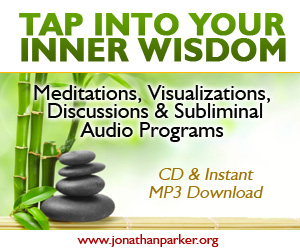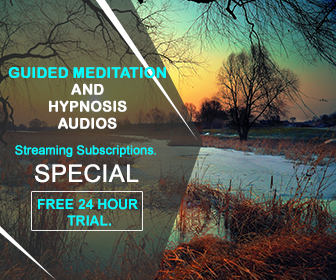Do you dream? Can you prove it! Where is the evidence? Is it pseudo-science?
Dreams don’t really need to be proved or verified by scientific methods, as the vast majority of people have experienced them when they sleep.
However, the reasons for dreaming and the content of dreams, is a whole different story.
Are your dreams trying to tell you something, or are they just mumbo-jumbo of a sleeping state.
Possibly dreams are a way for the brain to re-file and document previous events. Does anyone remember watching a computer defragmentation utility where data was shifted and relocated somewhere else and the main block then seemed to be tidied-up?
Why do people not like to arise from their dream-state? On the other hand if you suffer from nightmares, you can’t wait to awake and live in the ‘solid’ world again!
Dreams are one of the most fascinating and mystifying aspects of sleep. There is much that remains unknown about both sleep and dreams. Even the most fundamental question, why do we dream at all, is still subject to significant debate.
While everyone dreams, the content of those dreams and their effect on sleep can vary dramatically from person to person.
WHAT ARE DREAMS?
Dreams are images, thoughts, or feelings that occur during sleep. Visual imagery is the most common, but dreams can involve all of the senses.
On average, most people dream for around two hours per night. Dreaming can happen during any stage of sleep, but dreams are the most prolific and intense during the rapid eye movement (REM) stage.
During the REM sleep stage, brain activity ramps up considerably compared to the non-REM stages, which helps explain the distinct types of dreaming during these stages.
Dreams during REM sleep are typically more vivid, fantastical, and/or bizarre even though they may involve elements of waking life.
REM sleep is not distributed evenly through the night. The majority of REM sleep happens during the second half of a normal sleep period, which means that dreaming tends to be concentrated in the hours before waking up.
Studies have revealed diverse types of dream content, but some typical characteristics of dreaming include, that it has a first-person perspective and is involuntary.
Why humans dream remains one of behavioral science’s great unanswered questions.
In most cases, dreams don’t affect sleep. Dreaming is part of healthy sleep and is generally considered to be completely normal and without any negative effects on sleep.
CLICK ON ABOVE GRAPHIC FOR MORE INFORMATION
WHAT DREAMS MEAN
Dreams are the stories the brain tells during the REM stage of sleep. People typically have multiple dreams each night, that grow longer as sleep draws to a close.
Many dreams typically involve elements from waking life, such as known people or familiar locations, but they also often have a fantastical feel. People may live out scenarios that would never be possible in real life, although they aren’t always positive.
People have always tried to figure out the meaning of their dreams, but dream interpretation as a field of psychological study emerged in 1899, when Sigmund Freud published ‘The Interpretation of Dreams’.
How to interpret dreams, and whether they have meaning at all, are matters of considerable controversy.
While some psychologists have argued that dreams provide insight into a person’s psyche or everyday life. Others find their content to be too inconsistent or bewildering to deliver any reliable meaning.
Virtually all experts acknowledge that dreams can involve content that ties back to waking experiences although the content may be changed or misrepresented.
NIGHTMARES
In sleep medicine, a nightmare is a bad dream that causes a person to wake up from sleep. This definition is distinct from common usage that may refer to any threatening, scary, or bothersome dream as a nightmare.
Nightmares can create feelings of terror, anxiety, or despair, and lead to psychological distress or sleep problems like insomnia.
Research has identified a range of causes for nightmares, including post-traumatic stress, anxiety, dissociation, and physiological changes.
“Re-experiencing” is a common symptom of post-traumatic stress disorder (PTSD), also known as flashbacks. These involuntary recollections often manifest in the form of nightmares that can cause significant emotional distress.
Even when the dreams are not exact replays of a trauma, they may have a strong symbolic or indirect connection to the event.
Terrifying dreams that rouse people from sleep, plague children more often than adults. Nightmares can be especially vivid for young children because they have a harder time separating fantasy from reality.
However, at least half of grownups also have occasional nightmares, although fewer than 10% report frequent or recurring episodes.
Bad dreams are composed of bothersome or distressing content. Distressing dreams may cause a person to avoid sleep, leading to insufficient sleep.
CLICK ON ABOVE GRAPHIC FOR MORE INFORMATION
HOW CAN YOU STOP NIGHTMARES?
People with frequent nightmares that disturb sleep, should talk with a doctor who can determine if they have nightmare disorder or any other condition affecting their sleep quality.
Treatment for nightmare disorder often includes talk therapy that attempts to counteract negative thinking, stress, and anxiety that can worsen nightmares.
Many types of talk therapy attempt to reduce worries or fears, including those that can arise in nightmares. This type of exposure or desensitization therapy helps many patients reframe their emotional reaction to negative imagery, since trying to simply suppress negative thoughts may exacerbate nightmares.
Another step in trying to reduce nightmares is to improve sleep hygiene, which includes both sleep-related habits and the bedroom environment.
Healthy sleep hygiene can make your nightly sleep more predictable and may help you sleep soundly through the night even if you have bad dreams.
REMEMBERING
Suppose that you can remember ten incidents from a night’s dreaming, at least when prompted by a similar incident occurring a day. Now consider how many incidents occur during a day, including those you read about in the paper, watch on television or hear from your friends.
There are a vast number and it is highly probable that from time to time one of them will, at least to some extent, resemble one of those from your dreams. When one or more of these coincidences occur, people are likely to conclude that dreams foretell the future.
For people who want to document or interpret dreams, remembering them is a key first step. The ability to recall dreams can be different for every person and may vary based on age.
While there’s no guaranteed way to improve dream recall, experts recommend certain tips
Think about your dreams as soon as you wake up. Dreams can be forgotten in the blink of an eye, so you want to make remembering them the first thing you do when you wake up.
Before sitting up or even saying good morning to your bed partner, close your eyes and try to replay your dreams in your mind.
CLICK ON ABOVE GRAPHIC FOR MORE INFORMATION
LUCID DREAMS
Lucid dreams occur when a person is in a dream while being actively aware that they are dreaming. Vivid dreams involve especially realistic or clear dream content.
During lucid dreaming, which most commonly occurs during late-stage REM sleep, a dreamer is aware that they’re asleep, but is able to control events within their dreams, to some extent.
Lucid dreamers report willing themselves to fly, fight, or act out sexual fantasies. There are communities dedicated to learning how to lucid dream at will, although evidence that this is possible remains inconclusive.
Research suggests that the brain undergoes a physiological change during lucid dreaming. In functional Magnetic Resonance Imaging (fMRI) studies, the prefrontal cortex and a cortical network have been shown to activate when the brain begins lucid dreaming. This appears related to the “waking consciousness” that characterizes lucidity.
Most people do not typically experience lucid dreaming, or do not realize they do, and those who do tend to experience it in a limited way, without full agency.
Some experts and advocates of the potential benefits of lucid dreaming for boosting creativity and confidence, and reducing stress, believe most people can train themselves to experience lucid dreams.
ASTRAL PROJECTION
Astral projection (or astral travel) is an interpretation of an out-of-body experience (OBE) that assumes the existence of an “astral body” separate from the physical body and capable of travelling outside it.
Astral projection or travel denotes the astral body leaving the physical body to travel in an astral plane. The idea of astral travel is rooted in common worldwide religious accounts of the afterlife.
The consciousness or soul’s journey, or “ascent”, is described in such terms as “an… out-of-body experience, wherein the spiritual traveller leaves the physical body and travels in their ‘dreambody’ or ‘astral body’ into ‘higher’ realms.
It is frequently reported in association with dreams, and forms of meditation. Some patients have reported perceptions similar to the descriptions of astral projection, induced through various hallucinogenic and hypnotic (including self-hypnotic) means.
There is no scientific evidence that there is any manifestation of a consciousness or soul which is separate from neural activity. No scientific evidence shows that one can consciously leave the body and make observations.
The astral plane is believed by some to be an intermediate world of light between Heaven and Earth, composed of the spheres of the planets and stars. These astral spheres were held to be populated by angels, demons and spirits.
CLICK ON ABOVE GRAPHIC FOR MORE INFORMATION
Want to learn more about The Human Psyche – Mind Or Soul – Center Of Emotions – then just click to find out.
Payseur Family History
Fritz Springmeier – Bloodlines of Illuminati
The Rothschild Dynasty
The Disney Story
The above four links open a new tab in Louis Payseur’s site.
Well-Being & CBD Oil – Curated Presentation
Shopping & Clothing – Curated Presentation
Accessories – Curated Presentation



















